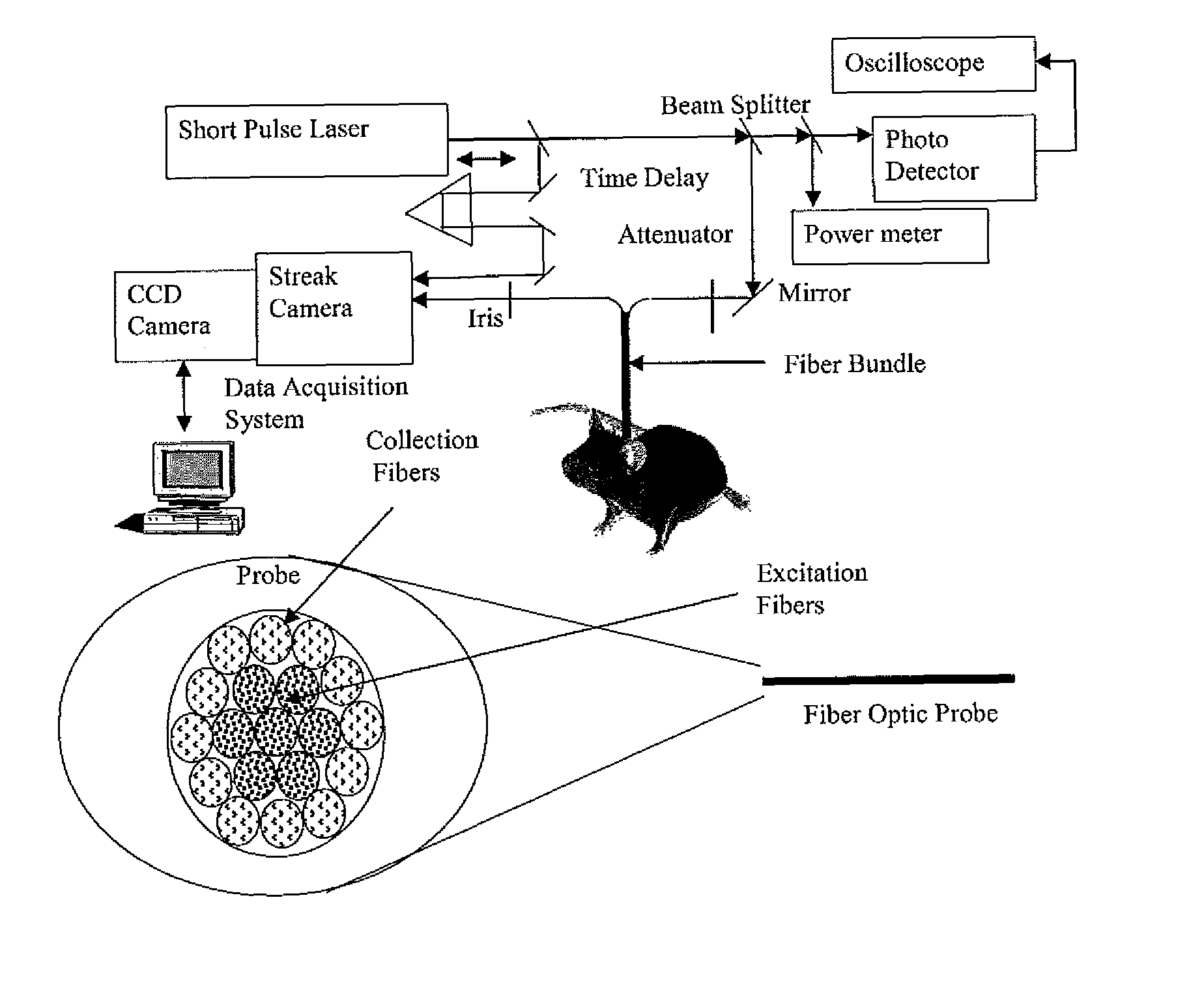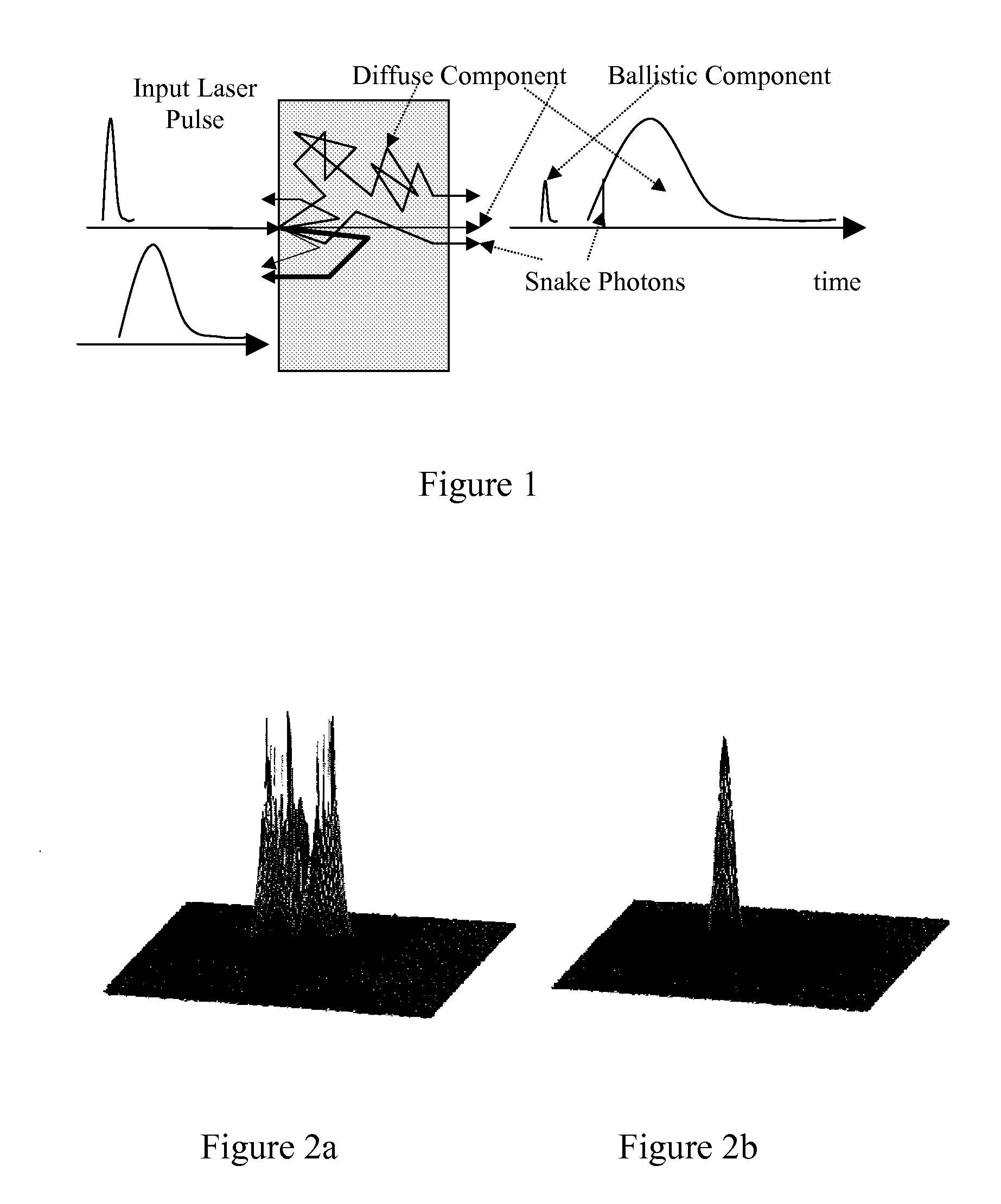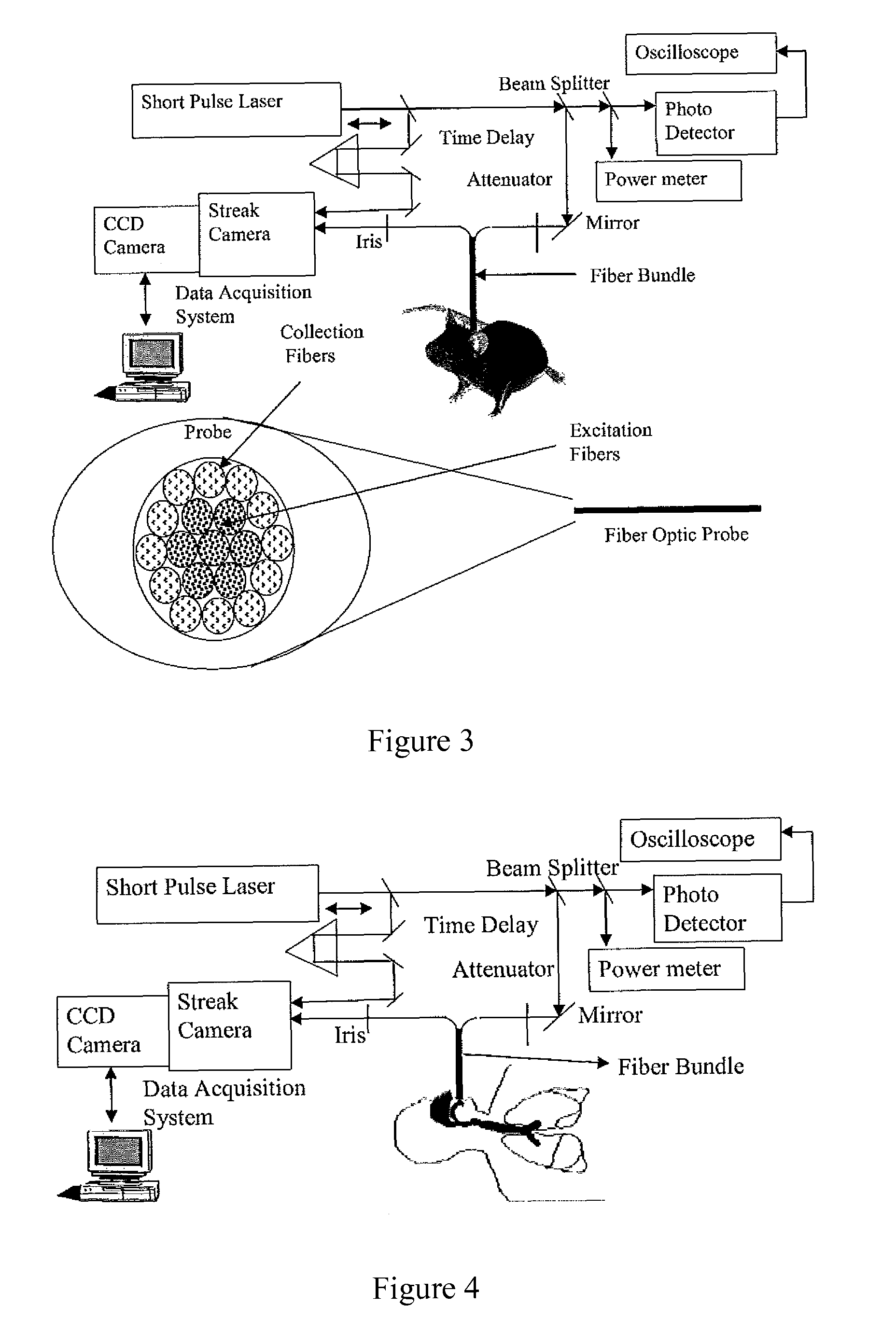Optical tomography system using short-pulse laser for early cancer diagnostics
a short-pulse laser and tomography technology, applied in the field of optic tomography, can solve the problems of high energy ionization of the tissue, inability to distinguish between malignant and benign tumors, and ineffective for younger women with dense, fibrous breasts, and may be potentially harmful
- Summary
- Abstract
- Description
- Claims
- Application Information
AI Technical Summary
Benefits of technology
Problems solved by technology
Method used
Image
Examples
Embodiment Construction
[0029]The invention is an optical tomography system for detection of early tumors and cancer using time-resolved intensity measurements. The location, size, and optical properties of tumors are determined from measured temporal reflected and transmitted signals. Coupling and delivery studies of short-pulse laser energy into tissue using hollow waveguides and tapers have been developed. Software based on transient radiative transport models is used for reconstructing the images from measured reflected and transmitted signals.
[0030]A short-pulse laser system is used for detection of tumors in tissue. Steps to further the development and understanding of time-resolved optical tomography for biomedical imaging include determination of optical properties of tissue medium, validation of experimental data using numerical models, better understanding of short-pulse laser transport processes, and gaining insight about laser-tissue interaction characteristics via careful experimentation. Tran...
PUM
 Login to View More
Login to View More Abstract
Description
Claims
Application Information
 Login to View More
Login to View More - R&D
- Intellectual Property
- Life Sciences
- Materials
- Tech Scout
- Unparalleled Data Quality
- Higher Quality Content
- 60% Fewer Hallucinations
Browse by: Latest US Patents, China's latest patents, Technical Efficacy Thesaurus, Application Domain, Technology Topic, Popular Technical Reports.
© 2025 PatSnap. All rights reserved.Legal|Privacy policy|Modern Slavery Act Transparency Statement|Sitemap|About US| Contact US: help@patsnap.com



